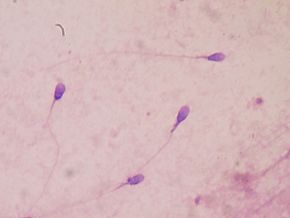Two studies showing detrimental effects on children from pyrethroids in 2 weeks! The June 3 post was about research linking household pyrethroid exposure to ADHD in children and young teens. The second study found that low level childhood exposures to pyrethroid insecticides was linked to lower scores on an IQ test (Wechsler Intelligence Scale for Children - verbal comprehension and working memory) in 6 year old children. The researchers viewed this as evidence that pyrethroid insecticides may "negatively affect neurocognitive development".
Bottom line: even though pyrethroid pesticides are considered safer than many other pesticides, they still can have undesirable effects on humans, especially developing children. To be safe, use least toxic pest control that uses non-toxic, safe "alternative" or "natural" methods rather than just "spraying a chemical". Another possibility is looking for "organic pest control" or"least-toxic Integrated Pest Management" (IPM) that looks to deal with pest problems with non-toxic methods (which may include sealing holes, heat, caulking, trapping, using sticky traps, and even vacuuming up insects). From Science Daily:
Impact of insecticides on the cognitive development of 6-year-old children
Researchers have provided new evidence of neurotoxicity in humans from pyrethroid insecticides, which are found in a wide variety of products and uses. An increase in the urinary levels of two pyrethroid metabolites (3-PBA and cis-DBCA) in children is associated with a significant decrease in their cognitive performances , particularly verbal comprehension and working memory. This study was carried out on nearly 300 mother and child pairs from the PELAGIE cohort (Brittany).
Pyrethroids constitute a family of insecticides widely used in a variety of sectors: agriculture (various crops), veterinary (antiparasitics) and domestic (lice shampoo, mosquito products). Their mode of action involves blocking neurotransmission in insects, leading to paralysis. Because of their efficacy and relative safety for humans and mammals, they have replaced older compounds (organochlorides, organophosphates, carbamate) considered more toxic.
Exposure of children to pyrethroids is common. It is different to adult exposure, due to the closer proximity of children to ground-level dust (which stores pollutants), more frequent hand-to-mouth contact, lice shampoos, etc. In children, pyrethroids are mainly absorbed via the digestive system, but are also absorbed through the skin. They are rapidly metabolised in the liver, and mainly eliminated in the urine as metabolites within 48 hours.
Pregnancy is also an important period of life for the future health of the child. For this reason, the researchers studied the PELAGIE mother-child cohort established between 2002 and 2006, which monitors 3,500 mother-child pairs. This cohort simultaneously considers exposure to pyrethroid insecticides during fetal life and childhood. A total of 287 women, randomly selected from the PELAGIE cohort and contacted successfully on their child's sixth birthday, agreed to participate in this study.
Two psychologists visited them at home. One assessed the child's neurocognitive performances using the WISC scale (verbal comprehension index, VCI, and working memory index, WMI). The other psychologist characterised the family environment and stimuli that might have had a role on the child's intellectual development, collected a urine sample from the child, and collected dust samples. Exposure to pyrethroid insecticides was estimated by measuring levels of five metabolites (3-PBA, 4-F-3-PBA, cis-DCCA, trans-DCCA and cis-DBCA) in urine from the mother (collected between the 6th and 19th weeks of pregnancy) and from the child (collected on his/her 6th birthday).
Results show that an increase in children's urinary levels of two metabolites (3 PBA and cis-DBCA) was associated with a significant decrease in cognitive performances, whereas no association was observed for the other three metabolites (4-F-3-PBA, cis-DCCA and trans-DCCA). With respect to metabolite concentrations during pregnancy, there was no demonstrable association with neurocognitive scores.

 Another good reason to breastfeed. Exposure to pollutants like nitrogen dioxide and airborne particles can cause negative effects on motor and mental development in infants, but a new study says those effects are countered in babies who are breast-fed for at least 4 months by their mothers. Researchers in Spain began monitoring rural, pregnant women in 2006 and analyzed samples from 638 women and their infants at 15 months. They reported that babies who are breast-fed did not suffer from the potentially harmful developmental impact of PM2.5 (pollution particle matter) and NO2 (nitrogen dioxide). From Science Daily:
Another good reason to breastfeed. Exposure to pollutants like nitrogen dioxide and airborne particles can cause negative effects on motor and mental development in infants, but a new study says those effects are countered in babies who are breast-fed for at least 4 months by their mothers. Researchers in Spain began monitoring rural, pregnant women in 2006 and analyzed samples from 638 women and their infants at 15 months. They reported that babies who are breast-fed did not suffer from the potentially harmful developmental impact of PM2.5 (pollution particle matter) and NO2 (nitrogen dioxide). From Science Daily: In a newly published study looking at how infant gut microbes change over time, once again babies had differences in gut bacteria depending on whether they were delivered vaginally or by Cesarean section.
In a newly published study looking at how infant gut microbes change over time, once again babies had differences in gut bacteria depending on whether they were delivered vaginally or by Cesarean section.
 There has been a lot of discussion in the last few years of our
There has been a lot of discussion in the last few years of our  The research finding that eating fruits and vegetables with high pesticide residues has a negative effect on sperm is disturbing. It wasn't the amount of fruits and vegetables eaten, it was eating fruits and vegetables with high levels of pesticide residues. Yes, the study does have some limitations (for example, a one time analysis, looked at men at a fertility clinic and not the general population), but...even with these limitations, the results are disturbing.
The research finding that eating fruits and vegetables with high pesticide residues has a negative effect on sperm is disturbing. It wasn't the amount of fruits and vegetables eaten, it was eating fruits and vegetables with high levels of pesticide residues. Yes, the study does have some limitations (for example, a one time analysis, looked at men at a fertility clinic and not the general population), but...even with these limitations, the results are disturbing. Healthy women were followed during their pregnancies and postpartum, and it was found that vaginal microbial communities change over the course of pregnancy, and then really change postpartum. They also found differences in the predominant Lactobacillus bacteria species between the women. In this study it was found that Lactobacillus bacteria were most dominant during pregnancy, especially L. gaserii, L. crispatus, L. iners, and L. jensenii, and there were ethnic differences in the species. And they found that the vaginal microbiome changes postpartum, with bacteria becoming more diverse and the numbers of Lactobacillus dropping. The message here is that what are "normal and healthy" microbial communities can vary between women (in this study
Healthy women were followed during their pregnancies and postpartum, and it was found that vaginal microbial communities change over the course of pregnancy, and then really change postpartum. They also found differences in the predominant Lactobacillus bacteria species between the women. In this study it was found that Lactobacillus bacteria were most dominant during pregnancy, especially L. gaserii, L. crispatus, L. iners, and L. jensenii, and there were ethnic differences in the species. And they found that the vaginal microbiome changes postpartum, with bacteria becoming more diverse and the numbers of Lactobacillus dropping. The message here is that what are "normal and healthy" microbial communities can vary between women (in this study  Research is accumulating that the microbial exposure from a vaginal birth, breastfeeding, and pets in the first year of life are all good for a baby's developing immune system and the gut microbiome.
Research is accumulating that the microbial exposure from a vaginal birth, breastfeeding, and pets in the first year of life are all good for a baby's developing immune system and the gut microbiome.